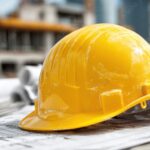
The brick façade industry is nearly as old as walls themselves. Its current method, single wythe, gravity-loaded, one-on-two brick veneer, is more than 100 years old. It is more than time for a change, an upgrade.
As rainscreen assemblies continue to accelerate their prevalence across North America, engineered brick rainscreens—utilizing metal tray systems—have emerged, offering significant value for architects and building owners. These high-performing assemblies provide a higher level of cost-effectiveness, energy code compliance/sustainability, accelerated project timelines, and design flexibility.
A single-source, engineered systems approach to every project is key to their superior performance. This is unique compared to many other rainscreen façade suppliers who offer a product-only, cafeteria-style approach where architects and contractors are left to source or select off-the-shelf components to round out a complete façade system. Engineered rainscreen systems provide a full complement of compatible components, are thoroughly tested and engineered to be purpose-fit, are compliant with codes, and are structurally tested long before any materials arrive on site.
A change in the industry
However, these systems have been subtly derided by masons and the brick industry for years. The culture seems to be that if it is not the full four-inch, single-wythe brick, then it is labeled ‘thin brick,’ which carries the industry-wide connotation of a gamble, a risk, something done only when the project can’t use or afford the real thing. But this is changing rapidly.
The approach of a fully engineered brick rainscreen assembly that meets AAMA 509 standards comes with designed subframing capable of meeting all energy codes, sustainability goals, and water management. A full set of shop drawings and a third-party engineering review support this. Traditional brick still relies on piecemealing components without drawings or third-party review by architects or engineers.
High-performance engineered façades are now available with brick, but they do not happen by accident, in a vacuum, or through random selection of components. A commitment enables these systems to consistently deliver the performance and reliability demanded.
Subframing considerations
Subframing components, typically aluminum but also available in stainless steel or composite material, are designed to support the trays that hold the bricks. The proper material, configuration, profile, and thickness or gauge are critical dimensions when designed for multistory construction. These should not be left to the installer or designer to determine what will work. With brick veneer, there are stacked bonds, running bonds, diagonal bonds, soffit areas, corbeled sections, and a wide variety of options within the wall. The framing components from the designer accommodate a wide variety of brick designs and patterns.
Framing components, sometimes called subgirt systems, are unsurpassed for continuous insulation (c.i.), allowing up to 254 mm (10 in.) plus a 51 mm (2 in.) open cavity for drainage, ventilation, and pressure equalization elements. The system must carry a load that ranges between 48 and 73 kgf/m² (10 and 15 lbs./sf), depending on the cavity depth and thickness of the bricks. With the single-source approach, the subframing is depicted in the shop drawings provided by the system supplier. Each bracket is identified, including the type and size required, the number of fasteners per bracket, and horizontal and vertical spacing, depending on the load required for the specific project.
Where there is a brick, there is a metal tray beneath it and subframing to support both. With the multitude of brick coursing available, the trays must be installed in a manner that supports each brick. The shop drawings from the supplier should depict every single brick in plan, elevation, section, and detail to provide the proper direction for the installer. The importance of this process should not be overlooked.
Before any material arrives on-site, all drawings should be reviewed and approved by a third-party engineer. They should examine the drawings, provide the calculations, and verify that the system as designed is fit for purpose, will perform as indicated, and will meet code compliance.
Easy to install
These engineered brick facades open the labor pool to carpenters, façade installers, and curtainwall contractors. The bulk of the systems are installed with a screw gun. Designed for high-rise construction and panelization, many of these advanced and improved systems no longer require mortar. The finished appearance is a clean and precise brick with no blemishes. These systems reduce labor costs, reduce maintenance, extend the design life, and eliminate CO2 emissions. Engineered brick rainscreen systems have taken the skill out of the labor and put it in the materials.
Regarding energy efficiency, these engineered single-source systems incorporate continuous insulation and a rainscreen design, providing superior thermal performance, reducing energy bills, reducing maintenance costs, and contributing to a comfortable indoor environment.
For architects and developers, single-source brick rainscreen systems optimize construction processes, reduce costs, expand design possibilities, and deliver a durable, sustainable, high-performance, and aesthetically pleasing finish.
Here are some further advantages of these systems:
- Systems-based rainscreens install faster than traditional brick facades and reduce labor costs. Most brick tray systems involve prefabricated panels or brick slips that are ready to install and are similar to tiling. Systems can be installed much faster (often four to five times quicker), leading to shorter project timelines. This time reduction translates directly to cost savings, and tray system manufacturers will provide a complete set of shop drawings, so why leave guesswork to the contractor?
- The materials in single-source systems are completely compatible from the start, requiring no customization or substitutions. The warranty covers the entire system, not just individual components.
- Metal tray systems require less skilled labor to install. Most are fabricated from stainless, Galvalume, or ZAM-coated steel and specifically designed for bricks. This means the overall skill level required can be lower than for traditional masons. This addresses the rising cost and scarcity of skilled bricklayers and opens up the huge market to façade contractors.
- They provide excellent design flexibility and aesthetic versatility. Brick tray systems offer a vast array of finishes, colors, textures, and bond patterns, allowing contractors to achieve the classic look of traditional brickwork while meeting diverse architectural designs. These systems can facilitate intricate designs that would be challenging or impossible with conventional bricklaying. They can seamlessly integrate with existing masonry or other cladding materials.
- Many systems offer the flexibility to be installed at any height, ideal for large facades—up to 50 stories. Reputable brick tray systems are tested to withstand harsh weather conditions, offering excellent air permeability, watertightness, wind, and impact resistance. And they can be installed in inclement weather.
Steve Collins is president and founder of Desana Partners Inc., Cranston, RI, since 2001. Desana is a pioneer in metal-tray rainscreen assemblies and stud-loaded brick veneer systems.





